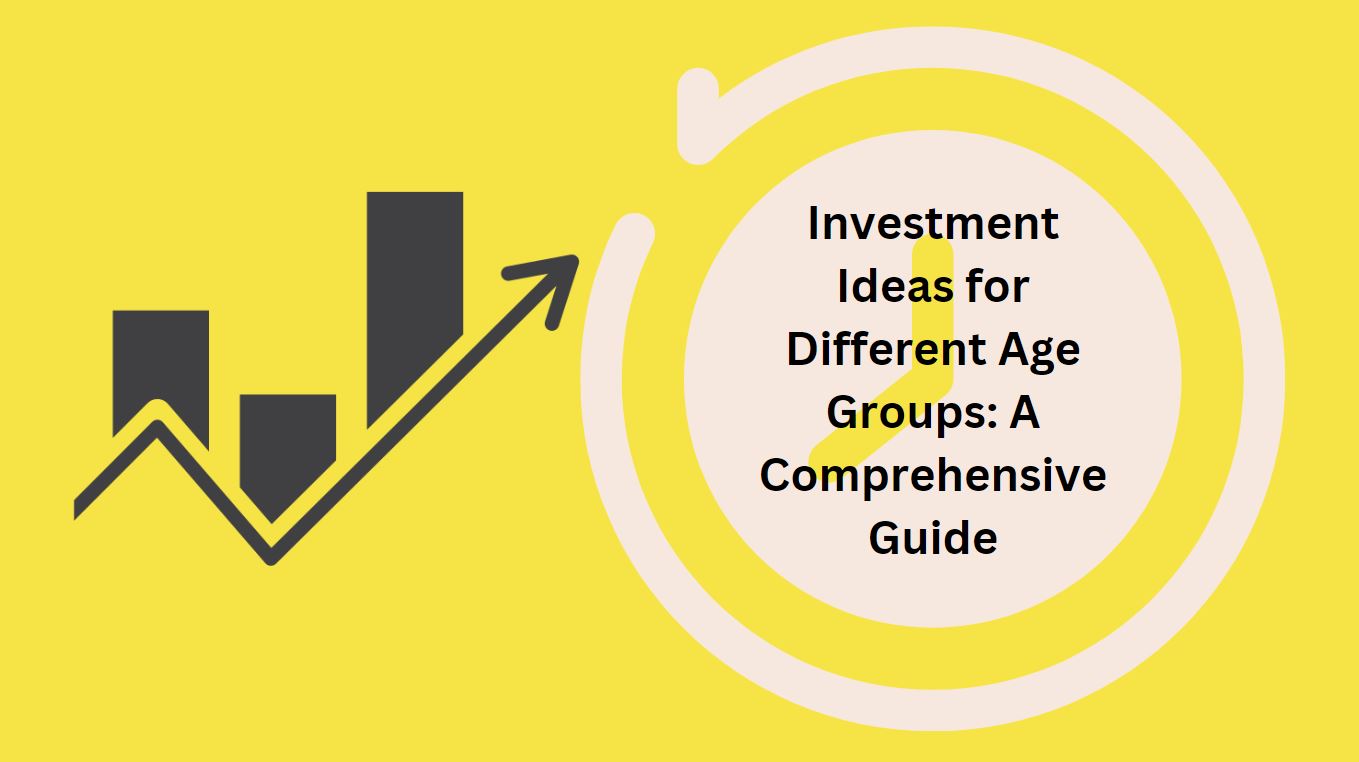- Likes
- Followers
- Followers
- Followers
- Subscribers
- Followers
- Members
- Followers
- Members
- Subscribers
- Subscribers
- Posts
- Comments
- Members
- Subscribe
Investment Ideas for Different Age Groups: A Comprehensive Guide

Investment is a dynamic process that changes according to life stages, age, and financial objectives. Investment ideas should be followed to achieve long-term financial success and optimizing returns, they are to suggest some customization in investment strategies for various age groups. Investment plans should be customized for each individual based on their financial situation, age, and risk tolerance. These investment ideas might not align with everyone’s viewpoint, but they could nonetheless enhance financial planning. This is a thorough overview on investment suggestions for different age groups, but before making any changes in your investment strategy you should consult your financial advisor first.
1. Teens and Young Adults (18-25)
To save for future educational costs, these people can invest in 529 plans (In the US, there exist 529 programs that are intended to assist people with saving for college costs. These plans are a desirable choice for saving for college expenses because they provide tax benefits, such as tax-free investment growth and withdrawals for eligible educational expenses.) or educational funds as per your geographies. Additionally, they can investigate stock markets, start learning about indexes and stock prices, and think about making investments in low-risk, high-reward stocks.
2. Young Professionals (26-35)
Young professionals ought to begin setting up money for emergencies and make it their top priority. For long-term growth potential, investing in exchange-traded funds (ETFs) or growth equities is also a wise choice. For long-term financial security, people should also start making contributions to retirement accounts like 401(k)s and IRAs. People should also start investing in long-term deposits.
- 401(k)s – Employer-sponsored retirement plans, or 401(k)s, enable workers to invest a percentage of their pre-tax income in order to save for retirement.
- IRAs – Popular retirement savings accounts that provide tax benefits to individuals are Individual Retirement Accounts (IRAs).
3. Established Professionals (36-45)
A diverse portfolio should be constructed by experienced investors using a combination of stocks, bonds, and mutual funds. Additionally, they can begin making investments in residential or commercial real estate. In the long term, they may use their real estate investments to generate passive income.
4. Mid-Career (46-55)
It’s now time for the people in this group to increase and optimize their retirement contributions; they ought to fund their retirement accounts with additional funds and think about making catch-up contributions. In order to save money on future medical costs, they should also invest in Health Savings Accounts (HSA).
5. Pre-Retirement (56-65)
People in this group should now make cautious investments because they are old enough to make sensible choices. More capital will be safeguarded by this method. Annuities (A formal agreement between you and a life insurance provider, whereby the provider pays you a series of regularly spaced payments in exchange for one or more premiums that you have paid) are a good option for them to consider if they want a reliable retirement income. They know what Social Security benefits are and ought to choose the best claim method.
Posts You May Like
6. Early Retirement (66-75)
For a reliable source of income, these people ought to invest in assets like dividend stocks. They ought to set up money for probable long-term care requirements.
7. Late Retirement (76 and above)
They ought to concentrate on protecting money and look into tax-saving options. They ought to think about investing in legacy funds for heirs and estate planning.
8. Empty Nesters
They ought to think about cutting back and use the extra money for possible expansion. They can set aside money for rewarding activities like trips.
9. Parents of Young Children
When allocating cash for their children’s future education, they ought to put education first. The family should be safeguarded by having sufficient life insurance.
10. Single Individuals
For future prospects, they ought to put more of an emphasis on personal growth and make investments in both professional and personal development. In addition, they ought to establish a sizeable emergency reserve for monetary stability.
Conclusion
Financial success depends on the ability to modify investment plans for varying age groups. At any point, achieving long-term financial goals and navigating the complexity of the financial landscape can be facilitated by a careful and diversified strategy to investing. Investment plans should be periodically reviewed and adjusted to be in line with changing financial goals and life circumstances.
Ultimately, people can maximize their financial progress, safeguard assets, and ensure a comfortable retirement by matching their investment ideas or plans with particular life stages. For long-term financial success, it is critical to periodically assess and modify investment plans in light of shifting objectives, market conditions, and individual circumstances.
Image credit- Canva


Comments are closed.